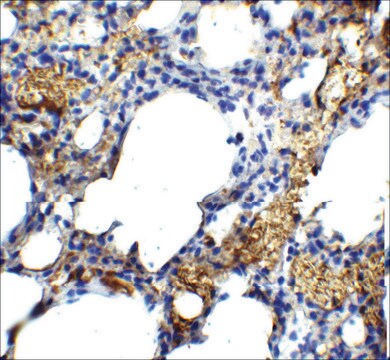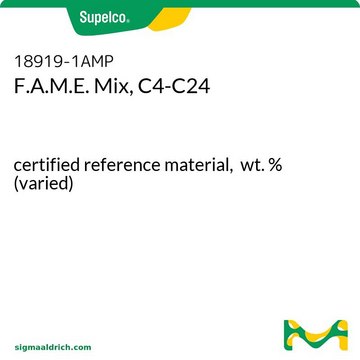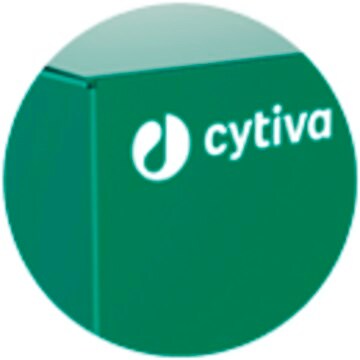About This Item
Polecane produkty
pochodzenie biologiczne
mouse
Poziom jakości
białko sprzężone
unconjugated
forma przeciwciała
purified antibody
rodzaj przeciwciała
primary antibodies
klon
8G4, monoclonal
masa cząsteczkowa
calculated mol wt 21.63 kDa
opakowanie
antibody small pack of 100 μL
izotyp
IgG1κ
numer dostępu UniProt
Warunki transportu
dry ice
temp. przechowywania
-10 to -25°C
docelowa modyfikacja potranslacyjna
unmodified
informacje o genach
human ... TM4SF1(4071)
Powiązane kategorie
Opis ogólny
Specyficzność
Immunogen
Zastosowanie
Ocena immunocytochemiczna w ludzkich komórkach śródbłonka żyły pępowinowej (HUVEC).
Analiza immunocytochemiczna: Rozcieńczenie 1:250 tego przeciwciała wykryło TM4SF1 w ludzkich komórkach śródbłonka żyły pępowinowej (HUVEC).
Testowane aplikacje
Analiza cytometrii przepływowej: Reprezentatywna partia wykryła TM4SF1 w zastosowaniach cytometrii przepływowej (Lin, C.I., et. al. (2014). Angiogenesis. 17(4):897-907).
Analiza Western Blotting: Reprezentatywna partia wykryła TM4SF1 w zastosowaniach Western Blotting (Sciuto, T.E., et. al. (2015). Biochem Biophy Res Commun. 465(3):338-443).
Analiza immunoprecypitacji: Reprezentatywna partia immunoprecypitowanego TM4SF1 w zastosowaniach immunoprecypitacji (Sciuto, T.E., et. al. (2015). Biochem Biophy Res Commun. 465(3):338-443).
Analiza immunocytochemiczna: Reprezentatywna partia wykryła TM4SF1 w zastosowaniach immunocytochemicznych (Lin, C.I., et. al. (2014). Angiogenesis. 17(4):897-907).
Mikroskopia elektronowa: Reprezentatywna partia wykryła TM4SF1 w zastosowaniach mikroskopii elektronowej (Sciuto, T.E., et. al. (2015). Biochem Biophy Res Commun. 465(3):338-443).
Inhibition Analysis: Reprezentatywna partia zablokowała tworzenie nowych naczyń krwionośnych w zatyczkach Matrigel. (Lin, C.I., et. al. (2014). Angiogenesis. 17(4):897-907).
Uwaga: Rzeczywiste optymalne rozcieńczenia robocze muszą być określone przez użytkownika końcowego jako próbki, a warunki eksperymentalne mogą się różnić w zależności od użytkownika końcowego.
Postać fizyczna
Przechowywanie i stabilność
Inne uwagi
Oświadczenie o zrzeczeniu się odpowiedzialności
Nie możesz znaleźć właściwego produktu?
Wypróbuj nasz Narzędzie selektora produktów.
Kod klasy składowania
12 - Non Combustible Liquids
Klasa zagrożenia wodnego (WGK)
WGK 2
Temperatura zapłonu (°F)
Not applicable
Temperatura zapłonu (°C)
Not applicable
Certyfikaty analizy (CoA)
Poszukaj Certyfikaty analizy (CoA), wpisując numer partii/serii produktów. Numery serii i partii można znaleźć na etykiecie produktu po słowach „seria” lub „partia”.
Masz już ten produkt?
Dokumenty związane z niedawno zakupionymi produktami zostały zamieszczone w Bibliotece dokumentów.
Nasz zespół naukowców ma doświadczenie we wszystkich obszarach badań, w tym w naukach przyrodniczych, materiałoznawstwie, syntezie chemicznej, chromatografii, analityce i wielu innych dziedzinach.
Skontaktuj się z zespołem ds. pomocy technicznej







